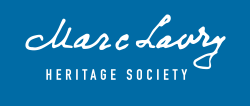
Concerto for Piano and Orchestra No. 2
A November 14, 2024 recording from the Pianos in Jerusalem Festival 2024 by the Jerusalem Symphony Orchestra at a concert as part of The Year of Marc Lavry 2023-2024.
Piano: Revital Hachamoff
Conductor: Sivan Albo Ben Hur
Publisher: The Marc Lavry Heritage Society
Synopsis:
- Allegro
- Andantino (Rhythm Oriental)
- Andantino (Pastorale)
Marc Lavry’s second concerto for piano was composed a few months after the first one.
Lavry dedicated both concerti to young talented pianists in their early twenties, who were just beginning their musical careers.
The first piano concerto, Opus 201, was dedicated to a young pianist from Tel-Aviv, Pnina Salzman. He dedicated the second concerto, opus 210, to Menachem Pressler, a young pianist who immigrated to Israel from Germany and lived in Haifa. Pressler was twenty-four when he premiered the concerto. Renowned pianist Frank Peleg performed it in 1952.
The Concerto for Piano and Orchestra No. 2 includes three movements.
The first movement is energetic, integrates technical virtuosity with harmonic and melodic beauty, and features rich orchestration. Percussion plays a special role in the opening movement of this composition. A recurring rhythmical pattern presented by the piano, and a festive theme first demonstrated by the wind instruments and later by the piano, create the motto of the entire movement.
The second movement is based on an Oriental (Middle Eastern) rhythm, as Lavry described it, of a three quarters + three eights rhythmical pattern Lavry used in many of his compositions. The folk melodies in this movement are all original, the product of Lavry’s artistic imagination. The last third of the movement includes a Cadenza for the piano accompanied by percussion, which leads to a passionate melody played by the entire orchestra. The movement ends with another soft segment of the special dialogue between the piano and the percussion.
The last movement opens with a moderate, pastoral introduction that hints about the motifs of the upcoming dance. The piano then bursts into an energetic dance, in a Hora rhythm. The movement is based on one of Lavry’s famous Hora melodies, which he incorporated into a few of his other compositions, yet his adaptation here uniquely suits the ensemble of piano and full orchestra.
Listening to Lavry’s Concerto for Piano and Orchestra No. 2 today, sixty-five years after it was written, reveals how relevant his music continues to be. As current trends are to connect Western with Oriental music, classical with popular styles, are stronger than ever, and as composers integrate different disciplines, Lavry’s music presents a new and relevant significance. His style is characterized by fascinating and complex rhythms, melodies and textures. It is influenced by Middle-Eastern flavors, modal harmony, popular music and jazz of the late forties. Lavry’s unique language is convincing, flowing and communicative, and his orchestration is filled with colorful, charming ideas.
Written by Michael Wolpe, Ph.D.
Performances:
October 1, 2011
Gala concert of the 14th Israeli Music Celebration in the Jerusalem Theater.
Revital Hachamovm, piano
Guy Feder, conductor
The Jerusalem Symphony Orchestra (IBA)




